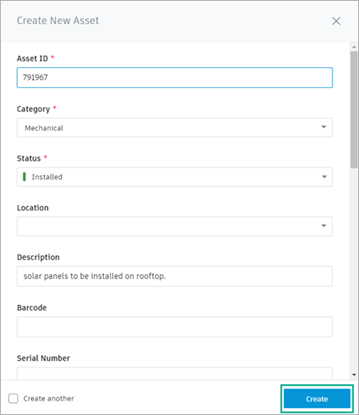Creating and Tracking Assets
You can create new assets in your project two ways. You can either import them in bulk using a .XLS template, or you can create them individually.
Import Assets in Bulk
To import assets in bulk, click the “Import” button and then download the sample .XLS file. The .XLS file you upload must match the format in the sample file. The maximum file size you can import is 30MB.

Your .XLS file requires four fields to be completed—name, category, subcategory, and status. All other fields are optional.
Be sure not to delete or rename any of the columns from the sample spreadsheet. If you change any of those, the assets importing won’t work.

Once you’ve added information for all assets in the spreadsheet, click “Browse,” select your .XLS file, and click Import.”
Bulk delete assets during import
It's possible to mark assets for deletion during the import process. This allows you to import a large number of assets without needing to delete unnecessary assets in BIM 360 later on.
To mark assets for deletion, first ensure that you're a project administrator.
- After you export your assets report, open the .CSV file and add a new column on the right side named "Mark for Deletion."
- Enter the value "Delete" for any asset that you would like deleted.
- Save the file and import it according to the steps above.
All assets marked "Delete" will be removed.
Create Assets Individually
To create assets individually, first click “Create” from the assets administration page.

You can then fill in all details about the asset. Four fields are required—asset ID, category, subcategory, and status. All other fields are optional.
Once you’ve entered all of the details about the asset, click “Create.” If you’d like to immediately create another asset, select the “Create another” checkbox.

